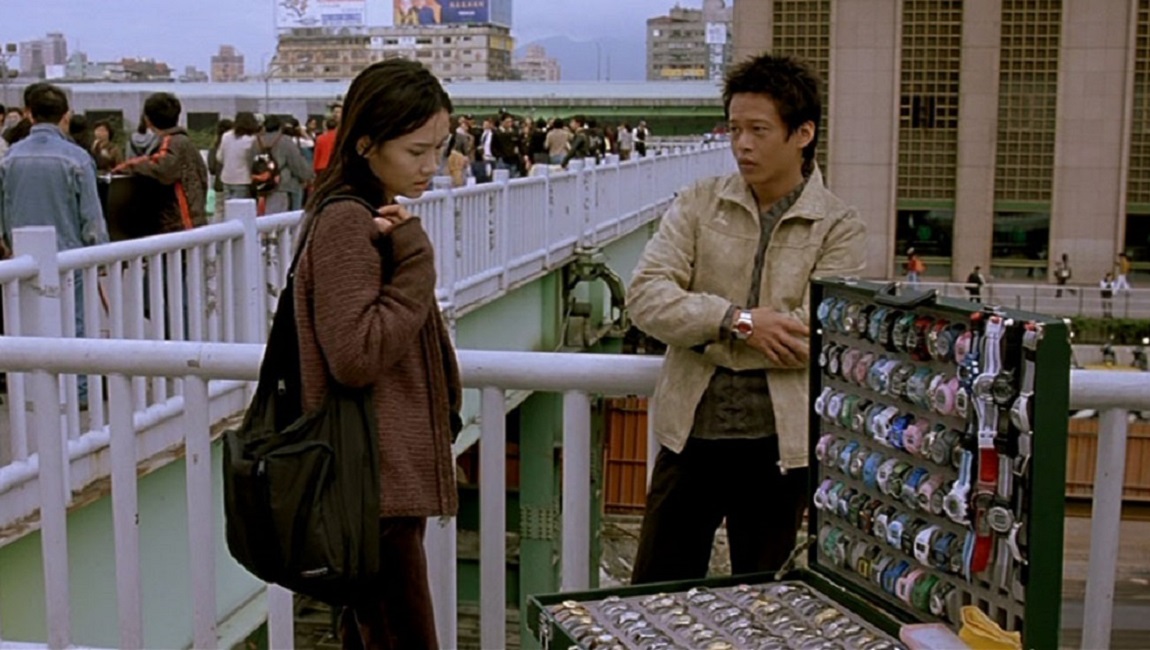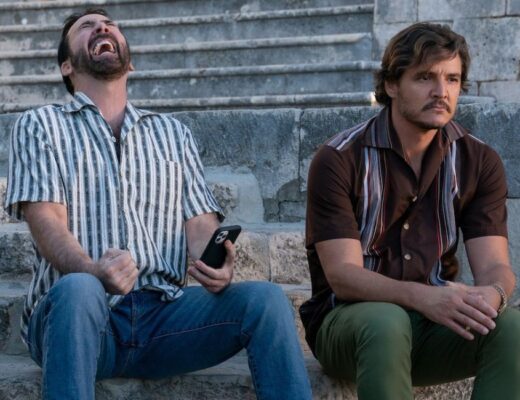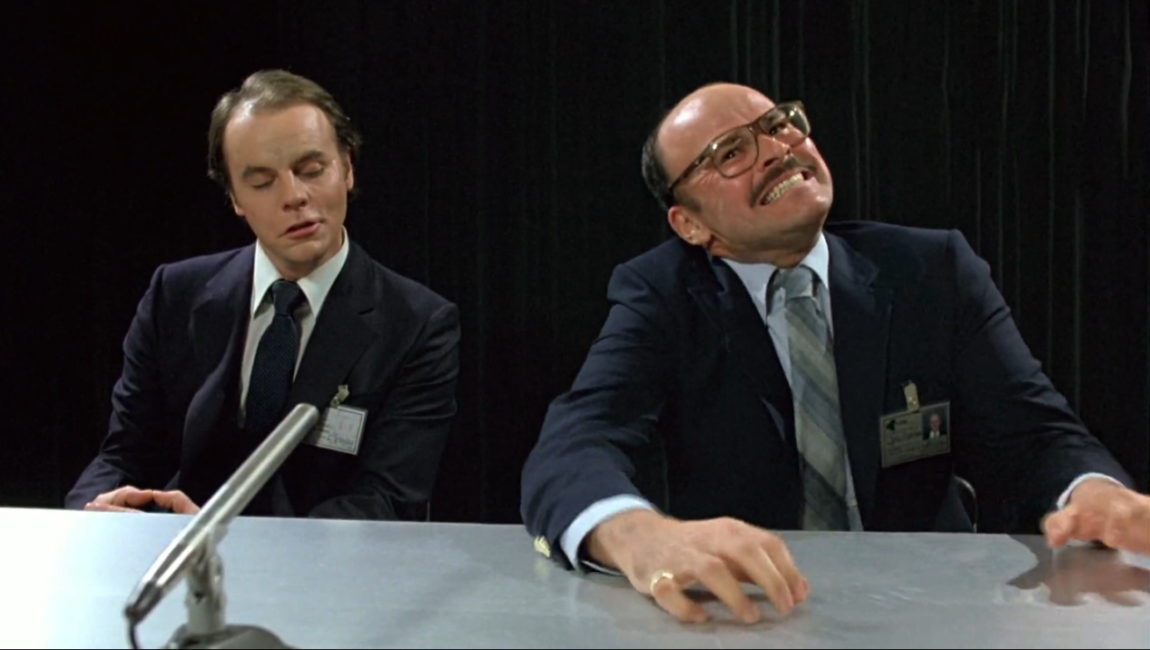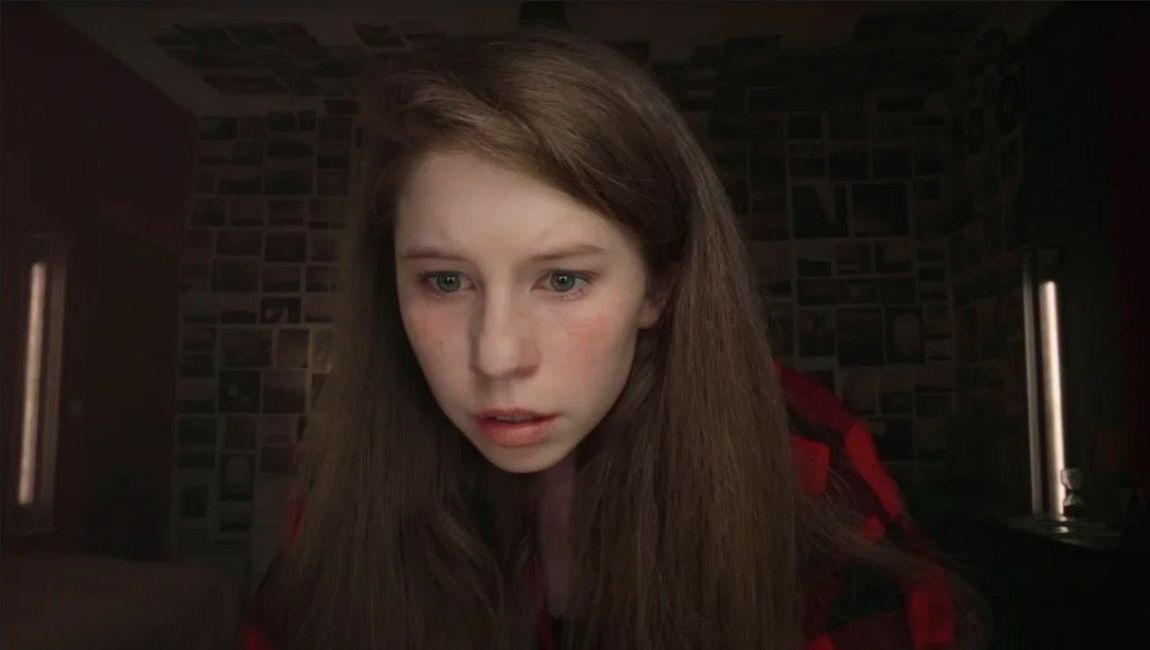Inspired by the mournful reverie found in observations of Lee Kang-Sheng, inundated by grief at the loss of his father , Tsai Ming-liang crafted an ethereal ghost-story, constructed of a gently absurd trajectory towards total disassociation. This development would lead to the dual perspective shift between the resultant feature, What Time is it There?, and its successive short, The Skywalk is Gone. In What Time, Lee’s Hsiao-Kang is a merchant, lazily selling watches to passersby on the skywalk. His brief encounter, following the loss of his father, with a young woman on her way to Paris, Shang-chyi (Chen Shiang-chyi), leads him to a lamentation of all things past, as his infatuation with this interaction provokes a sudden urge in him to turn all clocks back several hours, to Paris local time. In lieu of his father, and in lieu of confronting the death of his father which spectrally clouds him, or in reckoning the sorrow his mother goes through, Hsiao-Kang chooses a figmental, temporal recession, submerging himself in a time that exists anywhere but here. Such recourse recalls the relationship that is present so actively across Tsai’s filmography up to this point: the body’s relationship to its land and country; the alienation of urbanization; and the growing existential concern of autonomy, where the violences of history inform one’s decisions. What better way to escape such a fraught, determined reality than to create your own through a perpetual re-coating of the present by the past — the future is of no consequences if it will never occur.
Sexuality has always possessed an emancipatory element in Tsai’s work, and its muted application often suggests a form of otherness within which characters find themselves cocooned.
This is, however, perceiving the film solely through Hsiao-Kang who, while foregrounding the feature, cedes space to Shiang-shyi as attention center of the short. Her place in What Time is it There? consists of a continued, superficial explication of the film’s concerns of alienation, although through global, foreign environs. Her place in Paris, and her near inability to function as a tourist, is an incisive excavation of the evasiveness of identity that courses through Tsai’s filmography. In Taipei, characters experience isolation as a question of the relationship of one to their environment, but when extracted from that, placed somewhere alien in its own right, there’s nowhere else to go but back into oneself. Sexuality has always possessed an emancipatory element in Tsai’s work, and its muted application often suggests a form of otherness within which characters find themselves cocooned. With Skywalk, such a relationship to region is crystallized, when Shiang-chyi returns to find Hsiao-Kang and the skywalk have disappeared, the urban environment metamorphosizing into a commercial-industrial landscape. Her search for a man whose itinerancy represented a certain immediacy of the world is one of causally determined loss, as she rejects a grief, one founded on the loss of stability and permanence, in much the same way Hsiao-Kang did upon the death of his father. He, on the other hand, becomes a worker in the porn industry, further elaborating on the loss of autonomy in the world, where bodies are commodified and valued intimacies lapse into product. The ghost of Hsiao-Kang’s father appears to a sleeping Shiang-chyi at the end of What Time is it There?, in an act of bridging the measures of disassociation both have experienced, and the ghost follows her back to Taipei, where she’ll ask passersby who refuse to listen, who are shadowed by the skyscrapers of the city, where the skywalk might have gone.







